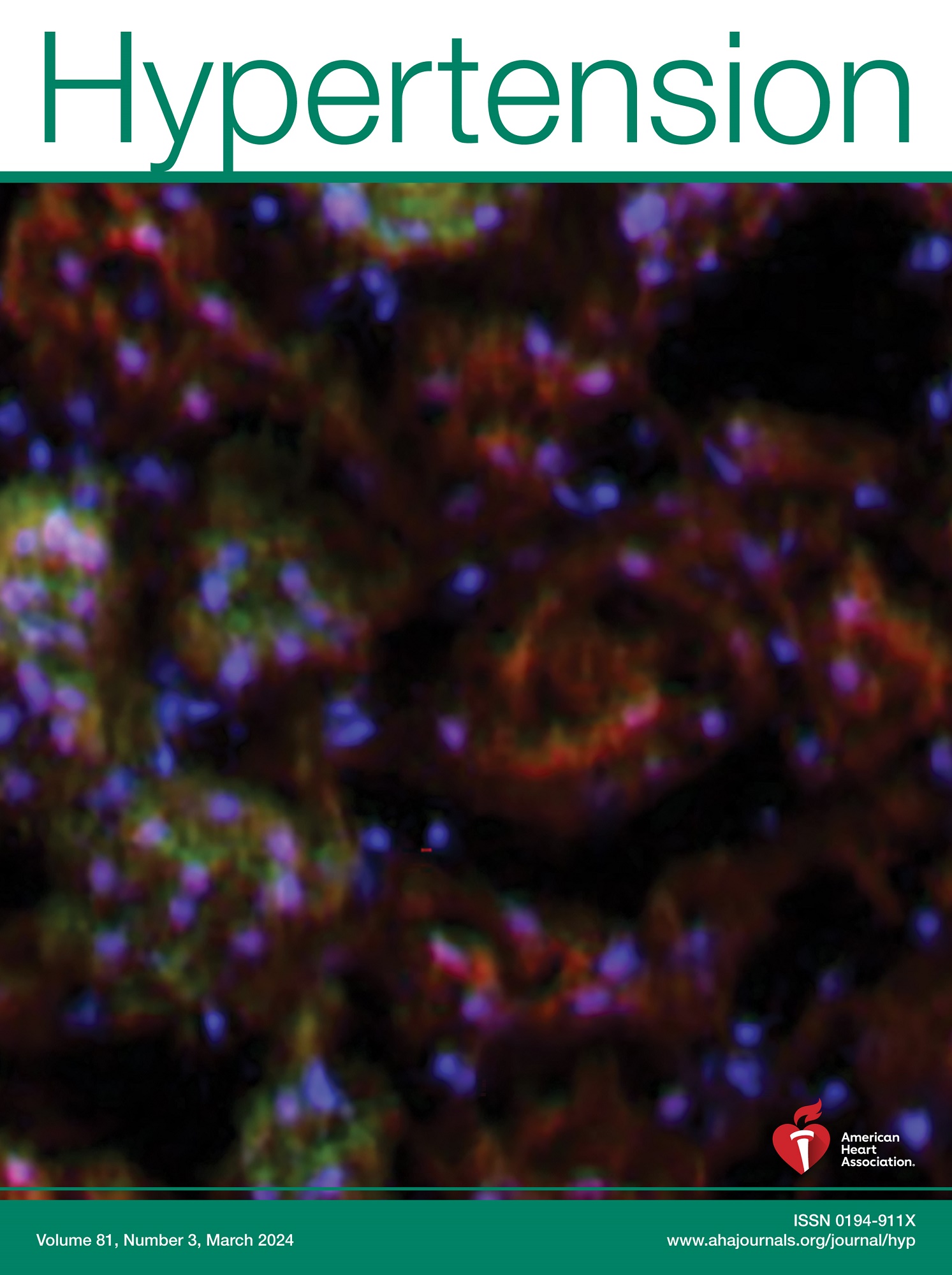用于估算儿童血压百分位数的闪亮和移动应用程序。
IF 8.2
1区 医学
Q1 PERIPHERAL VASCULAR DISEASE
引用次数: 0
摘要
背景:美国儿科学会、欧洲高血压学会和欧洲心脏病学会为儿童和青少年提出了不同的高血压分类标准,该标准基于2个百分位数衍生和不同年龄的不同固定血压阈值,这导致了临床和研究环境中的潜在混淆。方法我们开发了2款Shiny app和1款移动app,可以同时使用两种方法计算血压百分位数,并根据每个指南对高血压进行分类。第一个Shiny应用程序是为研究目的而设计的,为处理大型儿科数据集提供了一个有效的工具。第二个Shiny应用程序和移动应用程序是为临床使用而设计的,在用户友好的界面中为个体患者提供相同的相关结果。这款以研究为重点的应用程序在年龄、血压和体重分布不同的3个数据集上进行了测试。结果在比较样本中的3种高血压分类时,在所有年龄和体重组中,美国儿科学会和欧洲心脏病学会的标准一致地认定为高血压的个体多于欧洲高血压学会的标准,导致不一致率从2.3%到21.1%。相比之下,美国儿科学会(American Academy of Pediatrics)和欧洲心脏病学会(European Society of Cardiology)的研究结果显示出高度的一致性,只有0.0%至4.4%之间的微小差异或没有差异。13到16岁是一个例外,不同的标准导致更大的和不可预测的不一致。这些应用程序为研究人员和临床医生提供了基于不同指南计算血压百分位数和高血压分类的强大工具。这标志着确定哪种分类最能预测临床结果的重要的第一步。本文章由计算机程序翻译,如有差异,请以英文原文为准。
Shiny and Mobile Apps for Estimating Blood Pressure Percentiles in Children.
BACKGROUND
The American Academy of Pediatrics, the European Society of Hypertension, and the European Society of Cardiology propose distinct hypertension classification criteria for children and adolescents based on 2 percentile derivations and different fixed blood pressure thresholds at different ages, leading to potential confusion in clinical and research settings.
METHODS
We developed 2 Shiny apps and 1 mobile app that allow simultaneous calculation of blood pressure percentiles using both methods and classify hypertension according to each guideline. The first Shiny app was designed for research purposes, offering an efficient tool for handling large pediatric data sets. The second Shiny app and the mobile app are designed for clinical use, presenting the same relevant outcomes for individual patients in a user-friendly interface. The research-focused app was tested on 3 data sets varying in age, blood pressure, and weight distributions.
RESULTS
When comparing the 3 hypertension classifications across the samples, the American Academy of Pediatrics and European Society of Cardiology criteria consistently identified more individuals as hypertensive than the European Society of Hypertension across all age and weight groups, resulting in discordance rates from 2.3% to 21.1%. In contrast, the American Academy of Pediatrics and the European Society of Cardiology showed high agreement, with minimal or absent discordance ranging from 0.0% to 4.4%. An exception was seen in ages of 13 to 16 years, where differing criteria led to greater and unpredictable discordance.
CONCLUSIONS
These apps offer researchers and clinicians powerful tools to calculate blood pressure percentiles and hypertension classifications based on different guidelines. This marks an important first step toward identifying which classification best predicts clinical outcomes.
求助全文
通过发布文献求助,成功后即可免费获取论文全文。
去求助
来源期刊

Hypertension
医学-外周血管病
CiteScore
15.90
自引率
4.80%
发文量
1006
审稿时长
1 months
期刊介绍:
Hypertension presents top-tier articles on high blood pressure in each monthly release. These articles delve into basic science, clinical treatment, and prevention of hypertension and associated cardiovascular, metabolic, and renal conditions. Renowned for their lasting significance, these papers contribute to advancing our understanding and management of hypertension-related issues.
 求助内容:
求助内容: 应助结果提醒方式:
应助结果提醒方式:


